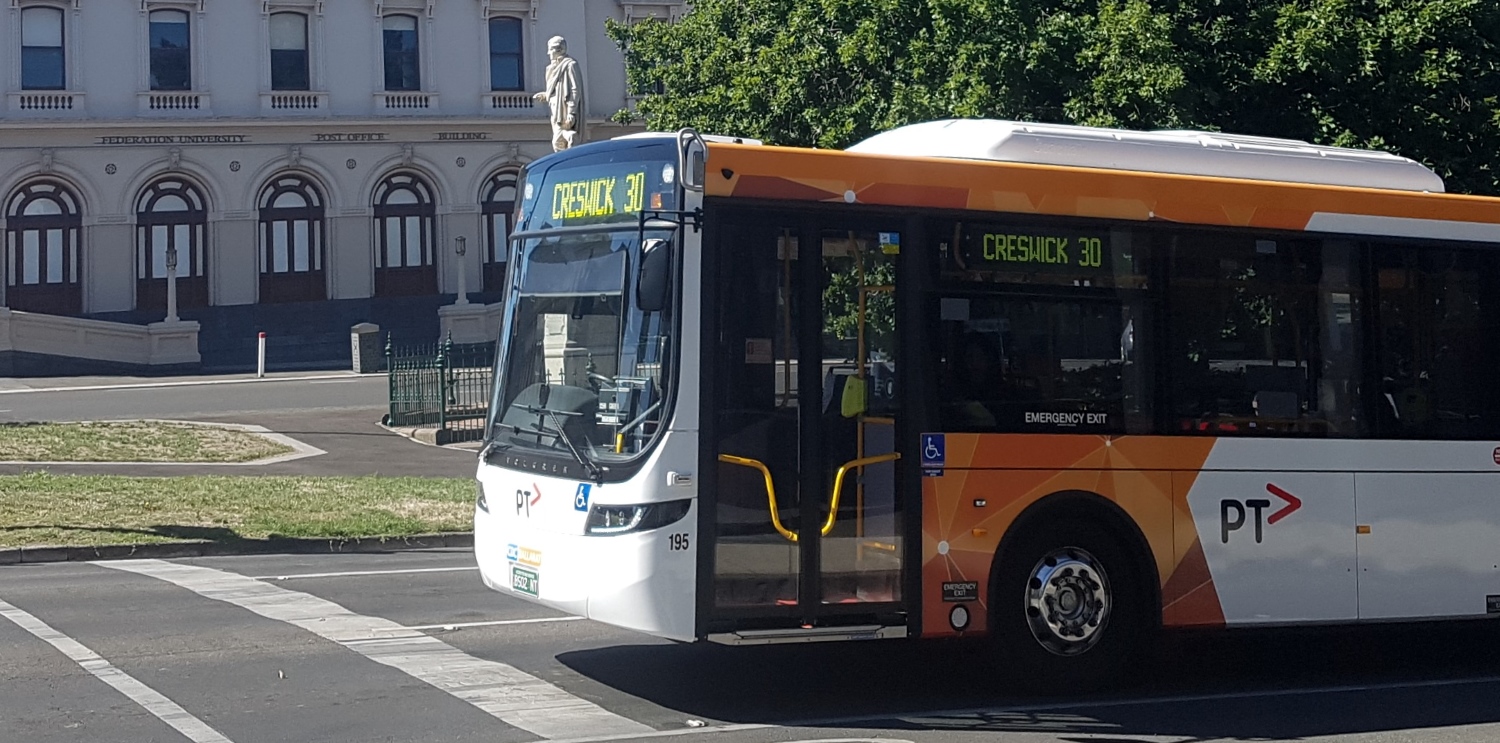The Public Transport Users Association (PTUA) has launched an ambitious policy document, “Connecting Ballarat”, which calls for dramatic improvements to Ballarat’s bus network.
Ballarat’s bus network currently has a lot of problems with indirect, inefficient routes through the CBD, which turn back on themselves in order to call at key destinations in a specific order, and terminate at Ballarat station. These paths waste valuable driver time, which is an inefficient use of taxpayer resources compared to more efficient paths. They’re also slow and hard for casual users to understand, which makes them unattractive to potential passengers.
The central idea of the Connecting Ballarat proposal is to link routes on opposite sides of Ballarat together into longer cross-town routes, so that buses can flow smoothly in one side of the CBD and out the other, in a path that is faster, more efficient and more sensible than the current paths. This would mean faster trips for passengers, a more understandable network for first-time users, and more efficient use of resources – resources that can be reinvested into other service improvements.
Three of these routes would become high-frequency SmartBus routes – fast, direct routes that run every ten minutes, designed to act as the spine of a true turn-up-and-go network for Ballarat. The other routes would increase to run every 20 or 40 minutes, to match the increased V/Line train frequencies expected from late 2019.
Buses would also run to a longer span of hours, connecting with commuter trains in the early mornings and late evenings, and allowing people travelling within Ballarat to take the bus home after dinner at a restaurant or a night at the movies.
PTUA Ballarat Branch Convener, Ben Lever, said this was in many ways an ambitious proposal, but that it also picked a lot of low-hanging fruit.
“We know the existing network has a lot of inefficiencies, both in the twisty paths it takes and the excessively-padded timetables. Not only are these inefficiencies frustrating for users, they take up a lot of resources that would be better spent on improving the service – that’s what we’re proposing here.”
“Beyond those efficiency gains, we’re calling on all political parties to invest some serious money into our bus network. Low-density outer suburbs of Melbourne have high-frequency SmartBuses running through them, connecting key destinations like shopping centres and universities with railway stations – Ballarat deserves the same. Even the standard non-SmartBus routes run till at least 9pm in most suburbs of Melbourne, while Ballarat’s buses currently shut down around 7pm – it’s just not good enough.”
“We’ve seen time and time again that when governments invest in good public transport, people use it. Whether it’s trains, trams or buses – if governments provide a fast, frequent and direct service all through the day, people flock to it. And on the other side of the coin, where services are slow, indirect and infrequent, it’s not surprising that very few people us them. Buses don’t have to be the poor cousin of trains, and we see plenty of examples around the world where they aren’t – even in Australia, cities like Brisbane and Sydney have several fast, direct bus routes with priority measures that make them perform a similar role to Melbourne’s trams.”
“If we want to reduce pressure on parking and help fight climate change, we need to get people out of their cars and onto public transport – and to do that we need to see serious investment in a high-quality service.”


